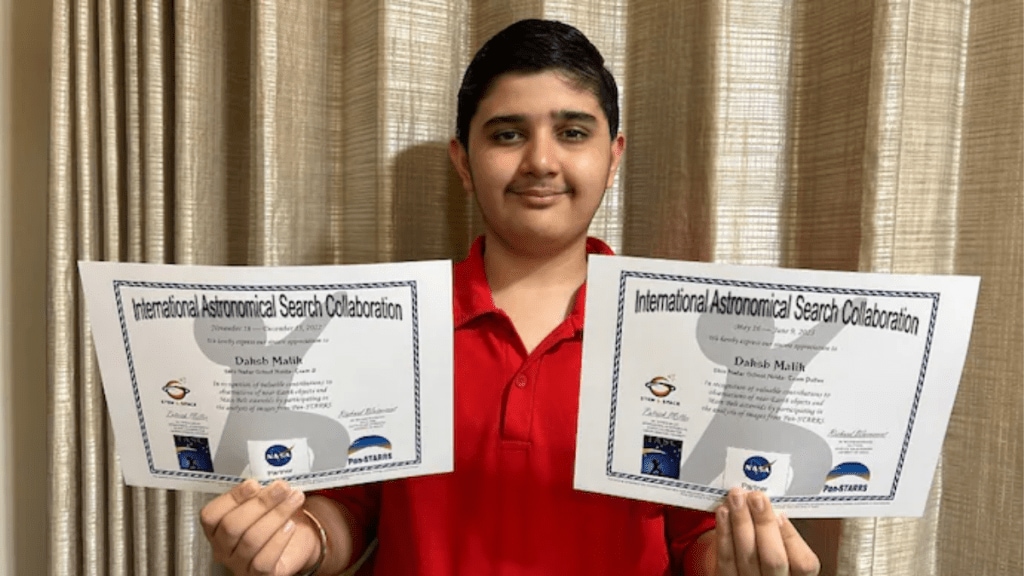A 14-year-old student from Shiv Nadar School, Noida, is about to make history by naming an asteroid he discovered, thanks to his participation in NASA’s International Asteroid Discovery Project (IADP).
The asteroid was officially confirmed by NASA as a “Provisional Discovery of a Main Belt Asteroid,” and now, Malik will have the honor of assigning it a permanent name. This confirmation follows his submission of a preliminary detection last year.
Daksh’s interest in space began at a young age, and he credits his passion for astronomy to space documentaries. Speaking to the media, he described this achievement as a “dream come true.”
Malik, alongside two schoolmates, had been hunting for asteroids for over a year and a half as part of IADP under the mentorship of Dr. Patrick Miller from Hardin Simmons University. The IADP is a citizen science program that encourages students and the general public to use NASA’s software and datasets to identify new asteroids. This global initiative is a collaboration between NASA’s Citizen Science Project, the International Astronomy Search Collaboration (IASC), and Pan-STARRS.
Through this project, participants from over 80 countries get access to high-quality astronomical data, including images from the Pan-STARRS telescope in Hawaii, to find undiscovered asteroids. Although thousands of participants engage each year, only a few manage to make a significant discovery, and Daksh is one of them. After submitting six preliminary detections, his asteroid was officially recognized.
Daksh joins a select group of Indian students who have reported discovering an asteroid, with only five others in the country achieving this feat. He attributes his success to his school’s observatory and astronomy programs, as well as the guidance of his teachers.
“This journey has inspired me to reach for the stars – literally and figuratively – and I hope it encourages others to pursue their passions fearlessly,” Daksh said, as reported by India Today.
As for naming the asteroid, Daksh is torn between two options: ‘Destroyer of the World’ and ‘Countdown.’ However, the process of officially naming the asteroid will not be immediate. The NASA verification process can take up to five years after an asteroid’s provisional discovery. Once verified, the Minor Planet Centre (MPC) grants the asteroid official status, and it is cataloged by the International Astronomical Union in Paris.

